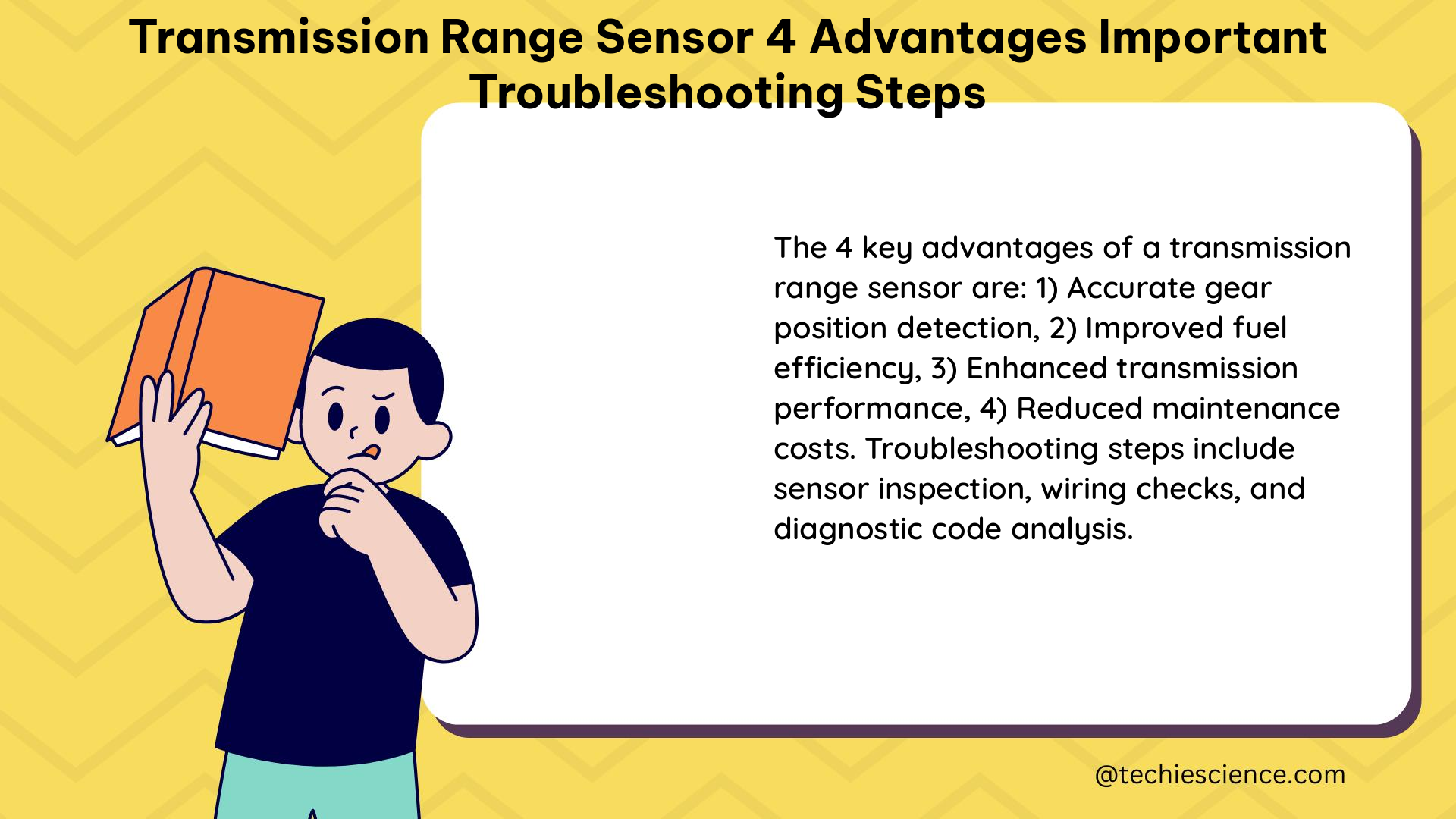The transmission range sensor, also known as a neutral safety switch or TR sensor, is a crucial component in a vehicle’s starter control circuit. It plays a protective role by preventing starter operation in gears other than Park and Neutral. The sensor informs the TCM of the current gear selection, and any issues with it can cause a no-start condition or harsh shifting.
Measurable and Quantifiable Data on Transmission Range Sensors
-
Resistance: Analog transmission range sensors use resistance to indicate gear selection to the TCM. An ohmmeter can be used for diagnosis by measuring the resistance in different gear ranges and comparing them with manufacturer specifications. The resistance values typically range from 0 Ω in Park/Neutral to over 5 kΩ in Reverse or Drive.
-
Voltage: Using the DC voltage setting on a digital multimeter, voltage should be present at this switch when the ignition switch is turned to the start position. With any gear position other than Park or Neutral, the starter circuit is open, and voltage is prevented from engaging the starter motor. The voltage should be around 12V in Park/Neutral and 0V in other gear positions.
-
Frequency: Some transmission range sensors use a frequency signal to communicate the gear position to the TCM. This frequency can be measured using an oscilloscope and should match the manufacturer’s specifications, typically ranging from 0 Hz in Park/Neutral to over 1 kHz in higher gears.
-
Waveform: The waveform of the frequency signal can also be analyzed to diagnose issues with the transmission range sensor. A clean, square wave indicates a properly functioning sensor, while a distorted or irregular waveform may suggest a problem.
4 Advantages of Transmission Range Sensors

-
Starter Protection: The primary function of the transmission range sensor is to prevent the starter from engaging when the transmission is not in Park or Neutral. This protects the starter and the transmission from potential damage.
-
Gear Position Feedback: The sensor provides the Transmission Control Module (TCM) with real-time information about the current gear position. This data is crucial for the TCM to make informed decisions about shifting, torque management, and other transmission-related functions.
-
Diagnostic Capabilities: The resistance or voltage values of the transmission range sensor can be used as diagnostic data to identify issues with the sensor or the transmission system. This information can help technicians quickly pinpoint the root cause of problems.
-
Improved Fuel Efficiency: By accurately monitoring the gear position, the TCM can optimize the transmission’s performance, leading to improved fuel efficiency and reduced emissions.
Important Troubleshooting Steps for Transmission Range Sensors
-
Check Voltage: Using a voltage meter, check whether battery voltage is present at the wires leading to the rest of the starter circuit in the Park and Neutral positions. If voltage is coming into this switch and no voltage is going out in these two selections, replace the neutral safety switch.
-
Measure Resistance: Measure the resistance using a high impedance 10 Megohm multimeter between the appropriate connections and then compare these results with manufacturer specifications. The resistance should match the expected values for each gear position.
-
Analyze Frequency and Waveform: If the sensor uses a frequency signal, use an oscilloscope to measure the frequency and analyze the waveform. Compare the results with the manufacturer’s specifications to identify any issues.
-
Perform Adjustments: If there’s a no-start condition, harsh shifting, or confusion for the PCM due to out-of-specification resistance or voltage, adjustments may be necessary. Consult the manufacturer’s service manual for the proper adjustment procedures.
-
Check Wiring and Connections: Inspect the wiring harness and connections between the transmission range sensor and the TCM for any signs of damage, corrosion, or loose connections. Repair or replace any faulty components as needed.
-
Verify Sensor Operation: Manually move the transmission through each gear position and observe the corresponding changes in resistance, voltage, or frequency. This can help confirm the sensor is functioning correctly.
Remember, never use an ohmmeter on a powered circuit as it can damage the meter. Always use a voltmeter to measure the voltage drop in a powered circuit.
Reference:
- Transmission Range Sensor Circuit
- Typical Transmission Range Sensor Voltage
- Electrical Transmission Range Sensor

Hi, I am Sanchari Chakraborty. I have done Master’s in Electronics.
I always like to explore new inventions in the field of Electronics.
I am an eager learner, currently invested in the field of Applied Optics and Photonics. I am also an active member of SPIE (International society for optics and photonics) and OSI(Optical Society of India). My articles are aimed at bringing quality science research topics to light in a simple yet informative way. Science has been evolving since time immemorial. So, I try my bit to tap into the evolution and present it to the readers.
Let’s connect through